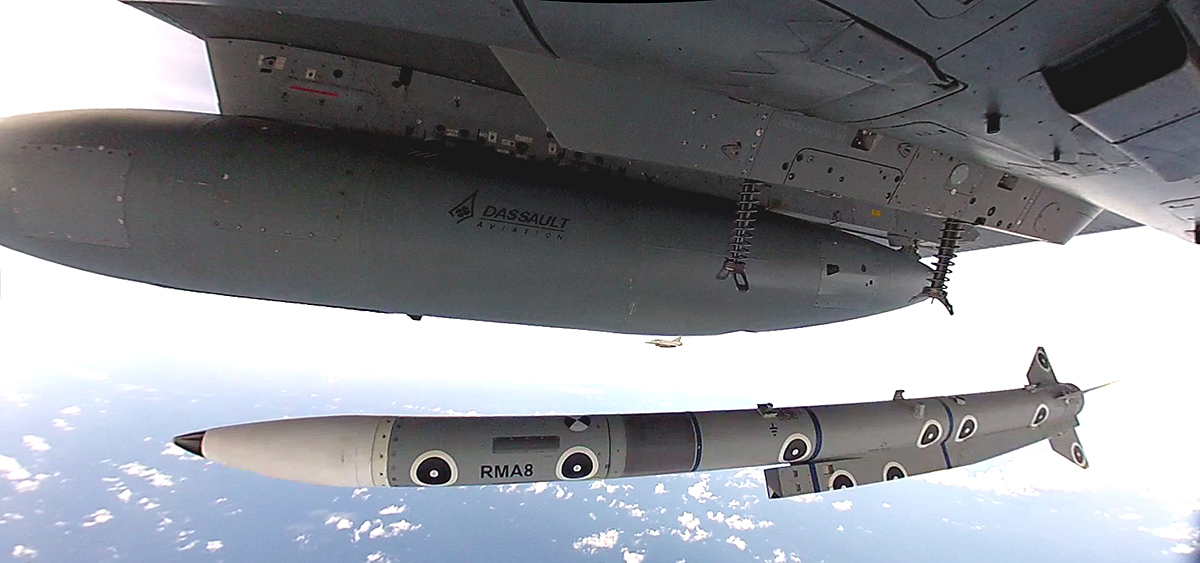World
Korean KF-21 Fighter To Get ‘World’s Deadliest’ Air-To-Air Missile; Seoul Inks Deal With MBDA For Meteors

South Korea’s Defense Acquisition Program Administration (DAPA) has inked a contract with MBDA, a European defense manufacturer based in France, to procure 100 Meteor air-to-air missiles for integration with South Korea’s indigenously developed KF-21 fighter jets.
Known as one of the world’s most advanced Beyond-Visual-Range Air-to-Air Missiles (BVRAAM), the Meteor is set to greatly enhance the Republic of Korea Air Force’s (ROKAF) aerial combat capabilities.
The Meteor missile acquisition was confirmed on November 1, as DAPA finalized the agreement to secure the missiles in time for the KF-21 fighter program’s first production phase.
These missiles, which will be delivered to coincide with the fighter jet’s entry into operational service in 2026, will be instrumental for the KF-21’s combat readiness.
While DAPA did not disclose financial details, the deal signifies a substantial upgrade to South Korea’s air defense arsenal.
China Cracks Down On “Chinese Propaganda”; Fake News About Military, Foreign Conflicts Face Axe
The Meteor missile, renowned for its capability to engage high-speed targets at distances of up to 200 kilometers and at speeds exceeding Mach 4, will provide the KF-21 fighters with a cutting-edge tool to establish aerial dominance.
The missile’s inclusion in the KF-21 program follows successful tests, including a test flight from Sacheon Airport in May this year, where a KF-21 carrying a Meteor missile demonstrated compatibility.
This came after two prototype KF-21s completed mid-flight separation trials of the Meteor missile in March 2023, solidifying the missile’s suitability for the new fighter jet.
However, challenges remain in the KF-21 program. Initially set to produce 40 airframes this year, DAPA announced early this year that only 20 jets would be manufactured in 2024—a 50 percent reduction attributed to budgetary constraints and the findings of a feasibility study.
The revised production strategy reflects an investment of 2.63 trillion won (USD 1.9 billion) to reduce output. Despite the production cut, South Korea’s ongoing acquisition of Meteor missiles reinforces the country’s ambition to field a world-class fighter jet by the end of the decade.
The missile will also enhance the KF-21’s position as a strong competitor among modern fighter jets, placing it alongside counterparts such as the Eurofighter Typhoon, Rafale, and Gripen.
The World’s Best Air-To-Air Missile
The MBDA Meteor missile has gained a reputation as the “World’s Best Aircraft-Killer Missile,” lauded for its advanced capabilities and distinctive propulsion technology.
As the premier Beyond-Visual-Range Air-to-Air Missile (BVRAAM) globally, the Meteor offers a level of operational flexibility, precision, and lethality that has redefined air combat capabilities. The missile emerged from a European collaboration in the mid-1990s.
It represents a technological leap intended to surpass the American AIM-120 AMRAAM, a long-standing benchmark in BVRAAM technology.
The Meteor’s collaborative origins span several nations, including the United Kingdom, France, Germany, Italy, Sweden, and Spain, each contributing to the development of this next-generation missile.
This joint effort reflects a shared vision to advance air-to-air combat capabilities and ensure air superiority in increasingly contested skies. Central to the Meteor’s success is its unique propulsion mechanism, a solid-fuel, variable-flow ramjet engine.

Unlike conventional rocket-propelled missiles, the Meteor operates more like a miniature air-to-air cruise missile, with an advanced thrust modulation system that allows for precise control throughout its flight.
This cutting-edge propulsion system enables the Meteor to conserve fuel during the initial phase of flight, adjust thrust as needed, and maintain endurance and range for extended engagements.
As the missile approaches its target, it boosts its propulsion to sustain high speeds, reaching up to Mach 4.5. This allows the Meteor to retain substantial energy reserves for the terminal phase, granting it a larger “no escape zone”—a critical feature that reduces the enemy’s ability to evade the missile even at considerable distances.
In combat scenarios, the Meteor’s capability allows it to adapt its performance across a range of tactical conditions. By sustaining high speed throughout its flight and dynamically managing energy, the missile remains highly effective over both short and long-range engagements.
This capability makes the Meteor particularly lethal and improves its maneuverability and targeting accuracy against agile and evasive threats. Unlike conventional air-to-air missiles, the Meteor’s consistent high speed and efficient fuel use allow it to pursue, engage, and intercept enemy aircraft with unmatched precision.
Beyond its technological advancements, the Meteor has established itself as a strategic asset among NATO and allied nations. Key European countries, including the UK, Germany, Italy, France, Spain, and Sweden—the missile’s initial developers—have integrated it into their arsenals.
Other nations, such as India, Qatar, Brazil, Croatia, and Greece, have also adopted the Meteor, recognizing its strategic value in enhancing air superiority.









